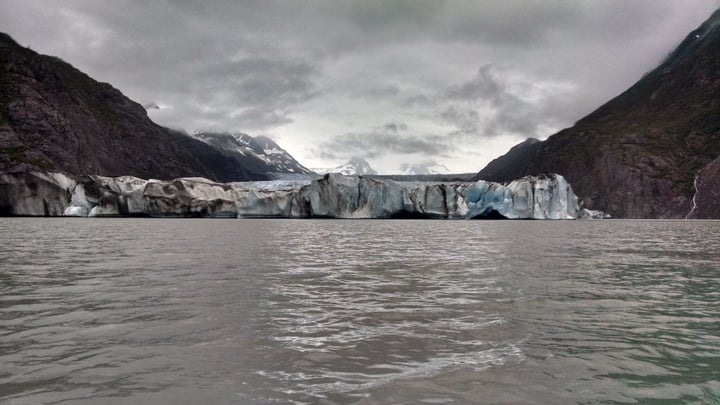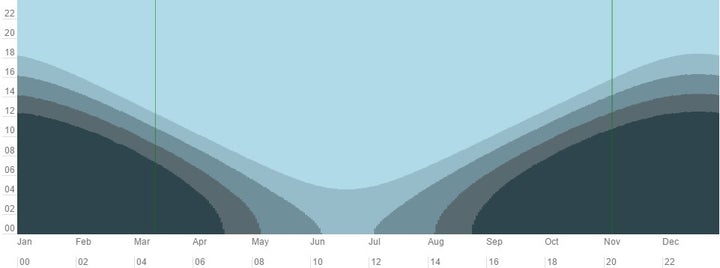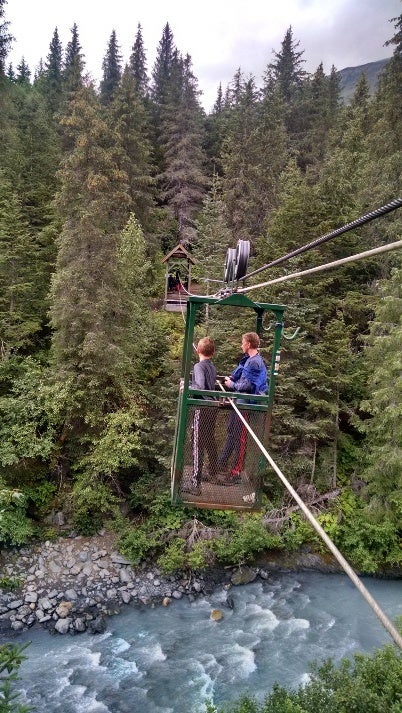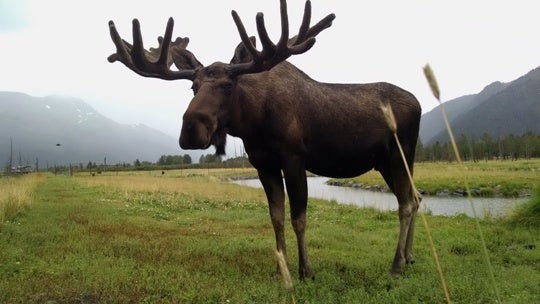
Late evening at Grewingk Glacier Lake in Kachemak Bay State Park in Alaska.
“Sleeping Around” is a recurring blog post series where Dr. Winter, a sleep specialist, goes beyond the typical questions about healthy sleep and seeks out the most unique sleep circumstances to offer his assistance in how to tackle them. Even if your problems are not as extreme, hopefully the experience can help shed some light on your own sleep difficulties.
With the end of Daylight Saving Time soon upon us, it is a perfect time to consider light and the role it plays in our sleep. There is probably no more important factor than light when it comes to how well we sleep at night, and there are few places in the United States with more unusual light characteristics than the state of Alaska.
I wanted to experience what it felt like to live in an environment of extreme light conditions and see how it affected my sleep, so I made the journey to Alaska this past summer. Consulting daylight schedules showed that June 20 would be Alaska’s longest day: 19 hours, 21 minutes and 31 seconds. Because of scheduling, I was not able to make it to Anchorage until July, when the day had already lost two hours to clock in at about 17 hours of daylight. That would do.

Chart illustrating the relative amounts of available light at various times during 2016 in Anchorage, Alaska.
As we think about Alaska and Daylight Saving Time, it is worth considering light and how it affects sleep. Most people think about our eyes as the receivers of light used by our brains to formulate visual images of our world, and they certainly are. Our eyes serve another important job of helping maintain our brain’s inner clock, otherwise known as our circadian rhythm. They do this by taking in light by a specialized group of cells called retinal ganglion cells [1]. These cells measure the amount of environmental light and send impulses to our suprachiasmatic nucleus, the keeper of that inner clock. As our environment gets darker, these impulses tell our pineal body to make melatonin, a sleep promoting chemical.
Does melatonin sound familiar? Many people utilize over the counter formulations of melatonin to help them sleep. Since this chemical promotes sleepiness, it is easy to understand how the sleep of our body is tied to the amount of light to which we are exposed. Before Thomas Edison screwed everything up, light exposure was no big deal. We had light mainly provided by the sun, and while we may have been stumbling around in the dark with whale oil lamps, at least our sleep was fantastic!
To really feel the effects of lighting changes on my sleep in Alaska, I did not block light from my environment. In other words, I slept in a room with huge windows and made no effort to prevent the light from coming in. I considered sleeping outside during this experiment but felt like I would be too delicious for a bear to resist (Alaska wildlife is no joke). I also spent as much time outside as possible and utilized the available light to the best of my ability. The great thing about spending time in Alaska during the summer is that upon arrival you receive a “for every five days you spend in Alaska you get one day free” punch card! Basically, you can eat dinner, walk out of the restaurant into light that makes you feel like it is 2 p.m., and do a full hike to some amazing waterfall without ever worrying about getting stranded without light.

Ample summer light will give you plenty of time to pull yourself across Glacier Creek on Winner Creek Trail in Girdwood, Alaska.
The effects on my sleep were immediate. Flying west, I’m quite used to staying up a little later to get myself in synch with my new time zone. Being in Alaska, this was a piece of cake. Light was everywhere, so it really did not feel like I was staying up later at all. By the time I finally settled in after eating what was probably my third dinner, I was ready to sleep.
Going to sleep around 11 p.m., there was still a surprising amount of light in the sky. Because of the extra daylight and the allowance for more outdoor activity as well as the time zone change, I am tired, so the light does not present much of a hindrance to falling asleep.

Night falls in Alaska.
After just 24 hours in my new environment, it is clear how disruptive it is to my sense of time and schedule to have so much extra daylight. My meal timing is off, especially with dinner. My brain is getting strong messages to “go go go” all the time from the available light. It is only when I look down at my watch and see that it is 7 p.m. that I’m reminded to eat.
As the second night rolls around, I’m just not at all ready to sleep at 11 p.m. I should be since its 3 a.m. back home. Amazingly, the available light seems to be trumping the ill effects of jet lag and sleepiness at night. Usually it is work during a westward trip to stay awake. Not in Alaska.
So what is the takeaway message from the largest state in the union when it comes to daylight savings time? Use light to your advantage. On Sunday, we will set our clocks back one hour. This shift forces us to stay up a little later (just like a westward trip to Alaska). How can this transition be eased? Yep, more light, and since the sun is not going to help you out, you need to create your own extended light period… just as if you were out exploring an Alaskan glacier.
To do this effectively, you need full spectrum light available to you in the evening. Keep yourself in a well lit place in your house. Go out of your way to turn on lights in the evening. Light boxes or devices like the ReTimer can help.
On the flip side, it is natural for some people to awaken early after the time change, as your old entrained wake time is now an hour early. In this situation, we need to do the opposite of what we did at night and avoid light until our wake time. My advice is if you wake up early, stay in the dark. Fight the urge to grab your phone and shine its light into your eyes. That will continue to reinforce the wrong wake time. Only when wake time comes do the lights come on! Bask in the light; get outside into sunlight as soon as possible.
Daylight savings time does not need to be the start of your winter-time sleep problems. Alaskan summers demonstrate to many each year the incredible power light has over our bodies. Use light to your advantage this weekend and conquer the change!

This moose seems to be sleeping well despite the long hours of daylight.
References
1. Berson, David M., Felice A. Dunn, and Motoharu Takao. "Phototransduction by retinal ganglion cells that set the circadian clock." Science 295.5557 (2002): 1070-1073.